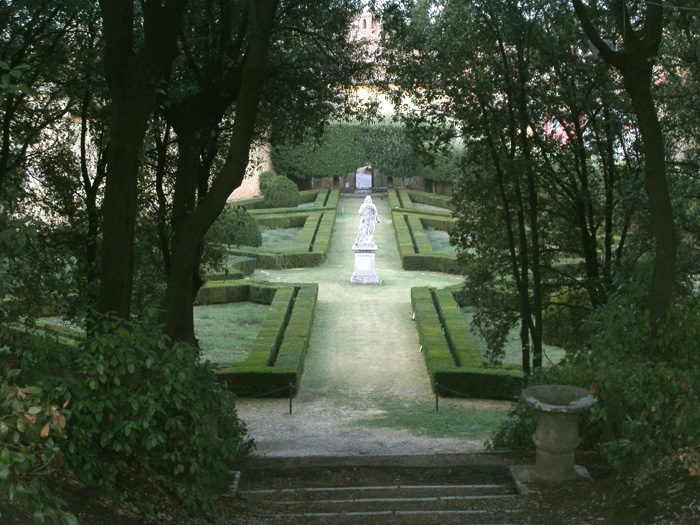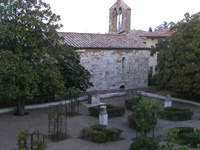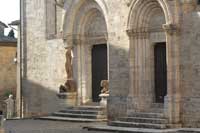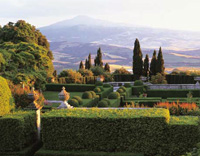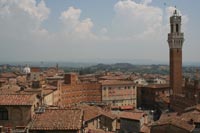|
| San Quirico d' Orcia - On the northern edge of Val d'Orcia, San Quirico d'Orcia has grown up on the site of the medieval village of Osenna. In 1256 it became part of Siena's territory, and today it still appears to us with its original medieval street plan. Located in a strategic position along the Via Cassia (and the old Via Francigena), San Quirico d'Orcia was often the residence of imperial bailiffs. In its town centre, encircled by fortified walls, a stop should be made at the Collegiata dei Santi Quirico e Giulitta with its magnificent Romanesque-Gothic doorways as well as at the Misericordia and Santa Maria di Vitaleta churches, at the Palazzo Pretorio (town hall) and at Palazzo Chigi. The Horti Leonini gardens are a splendid example of giardini all'italiana: they were designed in about 1540 by Diomede Leoni and periodically host temporary exhibits of contemporary sculpture. A final stop should be made to admire the Santa Maria Assunta church, a beautiful Romanesque construction, perhaps constructed on the remains of a pre- Cristian temple, and the Giardino delle Rose (rose garden) and the centuries-old Scala hospital. |
||
|
||
|
Podere Santa Pia |
Podere Santa Pia |
Abbazia di Sant' Antimo, between Montalcino and Podere Santa Pia |
||
Pienza |
Montalcino |
San Quirico d'Orcia |
||
Villa La Foce In the background Monte Amiata |
Siena, duomo |
Siena, Piazza del Campo |
||
Siena is reknowned, both nationally and internationally, for the Palio horse race contested by the 17 contrada which divide this small city. But Siena is also unique thanks to its maze of narrow streets, its numerous towers and elegant town houses, the immense Piazza del Campo and the Cathedral which dominate the heart of the Medieval city encircled by impressive walls. As far as culture is concerned, Siena has been a city of great artistic significance since ancient times with internationally acclaimed institutions such as the Chigiana Musical Academy, the Accademia dei Fisiocritici and Accademia degli Intronati, as well as the University for Foreigners. Sites not to be missed are the Church of St Domenico, the Church of St Francesco, the Diocesan Museum of Sacred Art and Palazzo Salimbeni which houses important frescoes.
|
||||
